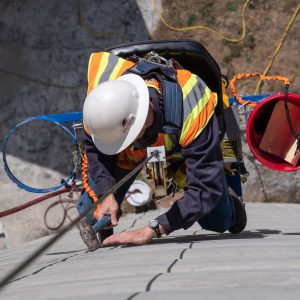 When to Schedule a Silo Inspection for Optimal Results
When to Schedule a Silo Inspection for Optimal Results
Silo experts recommend inspecting your silos every two to five years, whether you own a steel or concrete silo. Each type comes with its own weaknesses and vulnerabilities. Steel frames are prone to rust and deformation, while concrete frames suffer from cracking and material buildup. Silo inspections can be time-consuming, so owners should be sure they have the time and flexibility to oversee the inspection process. The following guidelines will help silo owners schedule inspections for optimum results.
Know the Reason for Your Silo Inspection
Every silo inspection is different. The two to five-year calendar is a good rule of thumb, but an inspection might become necessary based on major events in a silo’s life cycle. Reasons for inspecting a silo might include:
- Aging of the Structure: This is the most common reason for inspection. Silos and their structural components break down over time. Regular inspections can lead to cost-saving preventative maintenance.
- Moving the Structure: An inspection should be conducted any time a silo is moved from one place to another. Silos are constructed with their specific geographic location in mind. New soil types or foundations can severely impact a silo’s structural integrity. The move itself might damage building materials. Schedule an inspection after moving a silo.
- Changing Storage Material: The material stored in your silo should not be replaced with another material without an inspection because each material has different properties. Bean meal exerts a different pressure against the silo walls than corn. Comparing materials will reveal significant weight and pressure differences. An inspection can ensure that a new material being stored in a silo isn’t worsening any existing structural weaknesses.
- Adapting to New Safety Standards: Most safety standards only apply to new builds. This means your existing silos might not require updating. Responsible silo owners can be proactive and bring old structures up to code. Consider scheduling an inspection to stay up to date with safety regulations, legislation or other policies.
Decide Whether to Clean the Silo in the Same Process
Some inspection companies, including Mole•Master, provide both cleaning and inspection services. Many silo owners will schedule a cleaning and inspection consecutively to save time and get the most out of the maintenance budget.
Set Aside Time to Give Full Attention to the Inspection Process
Even though a professional will be handling the inspection, silo owners will want to block off time in their own schedules to oversee the process. The entire process will benefit from open communication between the inspector and the owner before, during and after the inspection and cleaning. Mole•Master recommends scheduling inspections during off-seasons. This does not apply to every industry, but it’s important to be present and engaged during any and all inspections. For a stress-free silo inspection, call the silo experts at Mole•Master. View our inspections page for a full list of services or call us at 740.374.6726.

